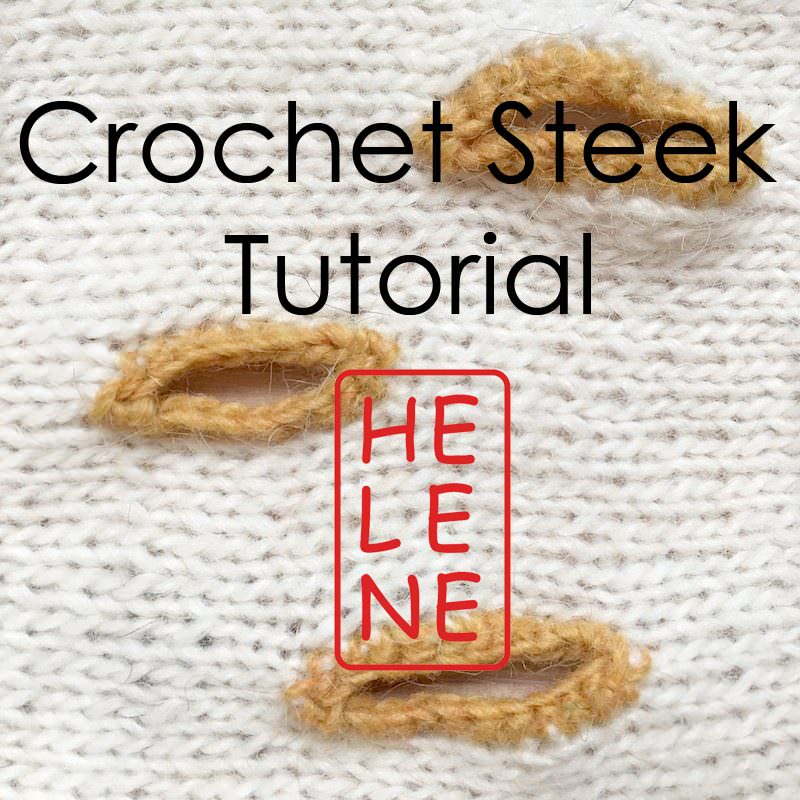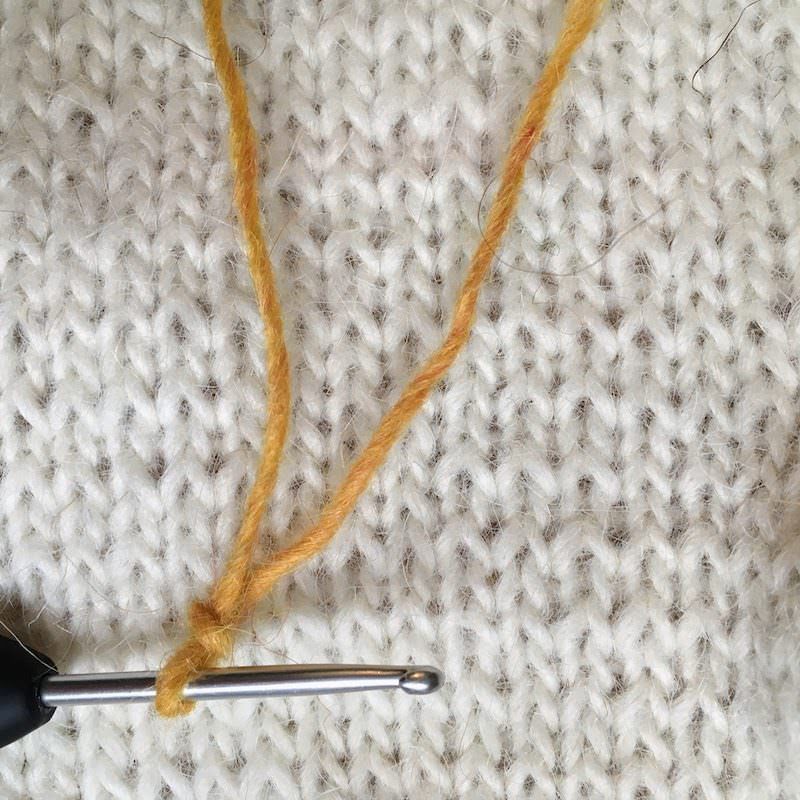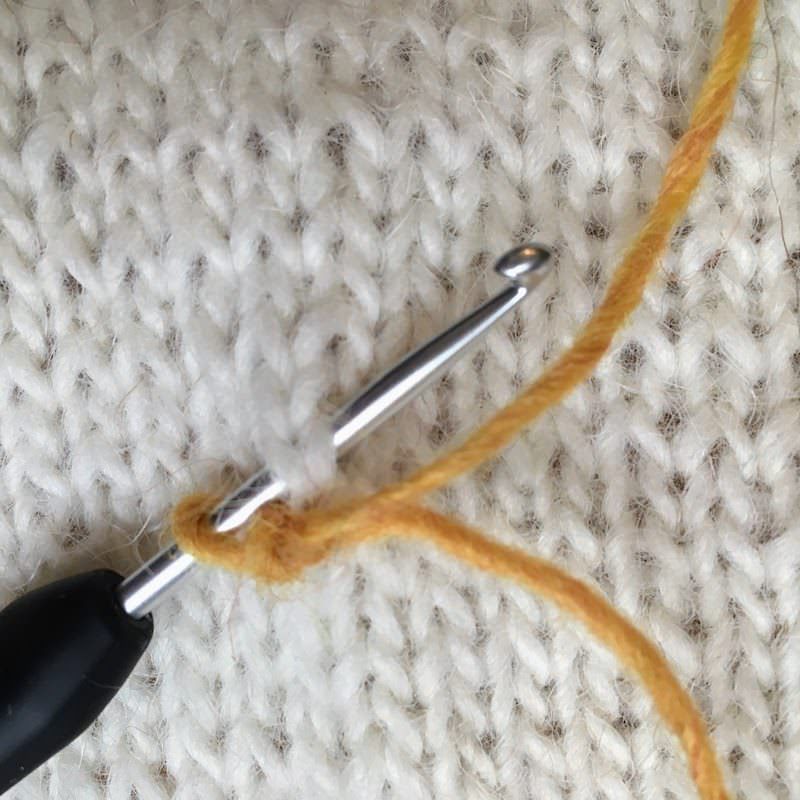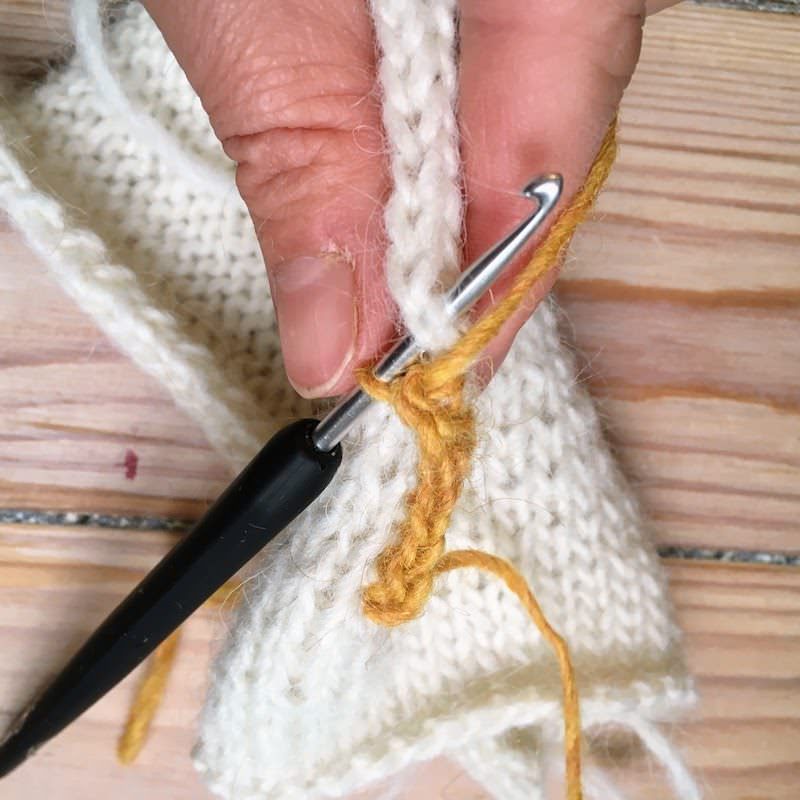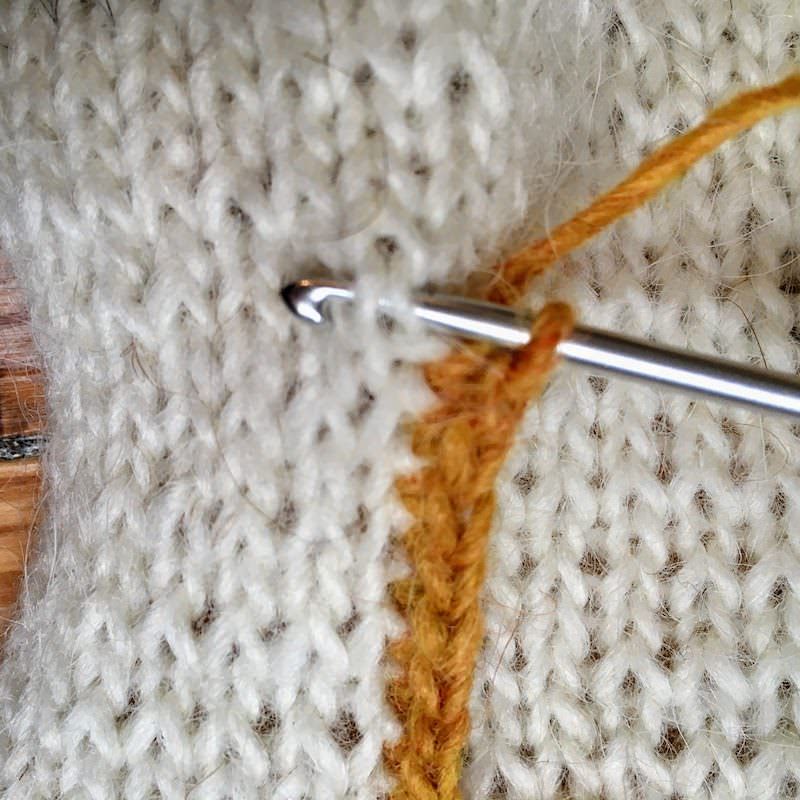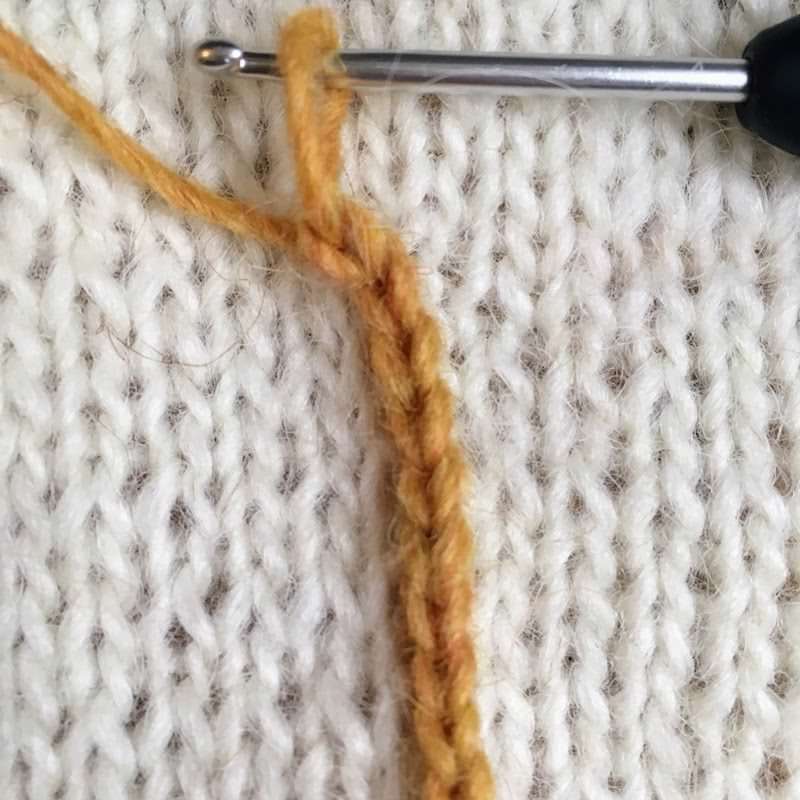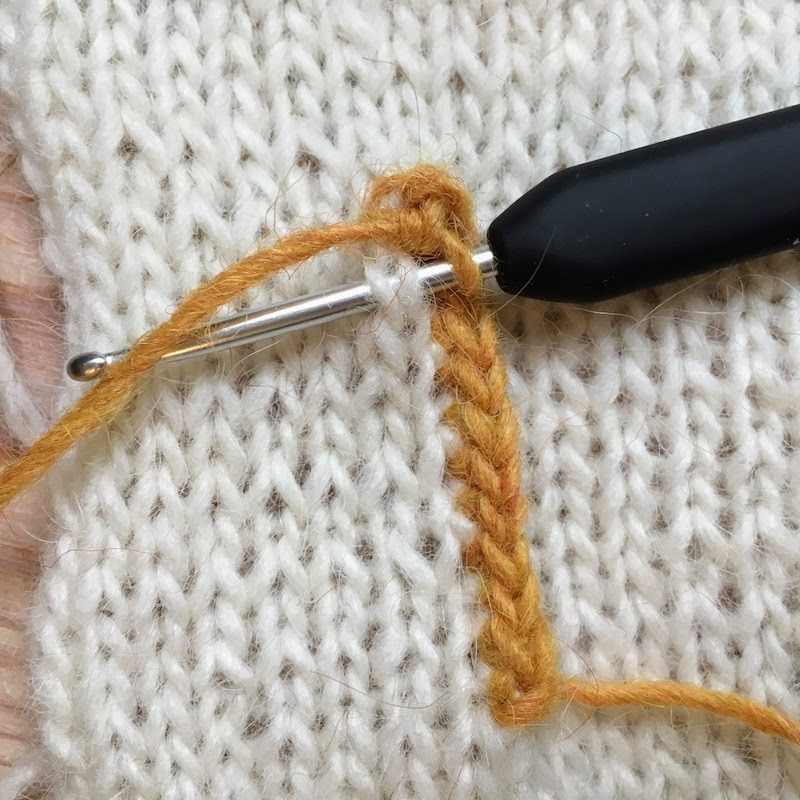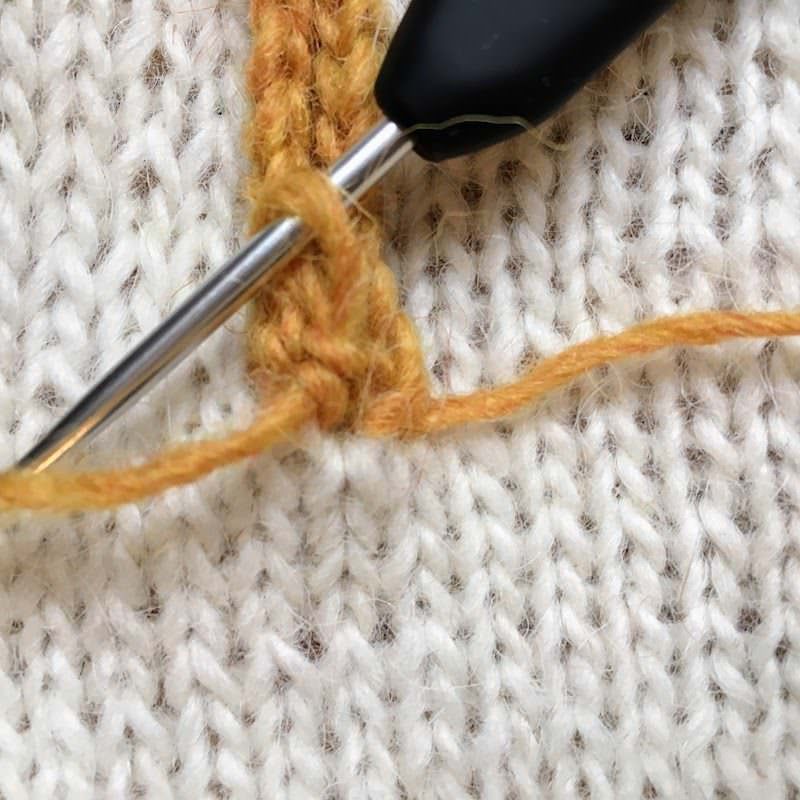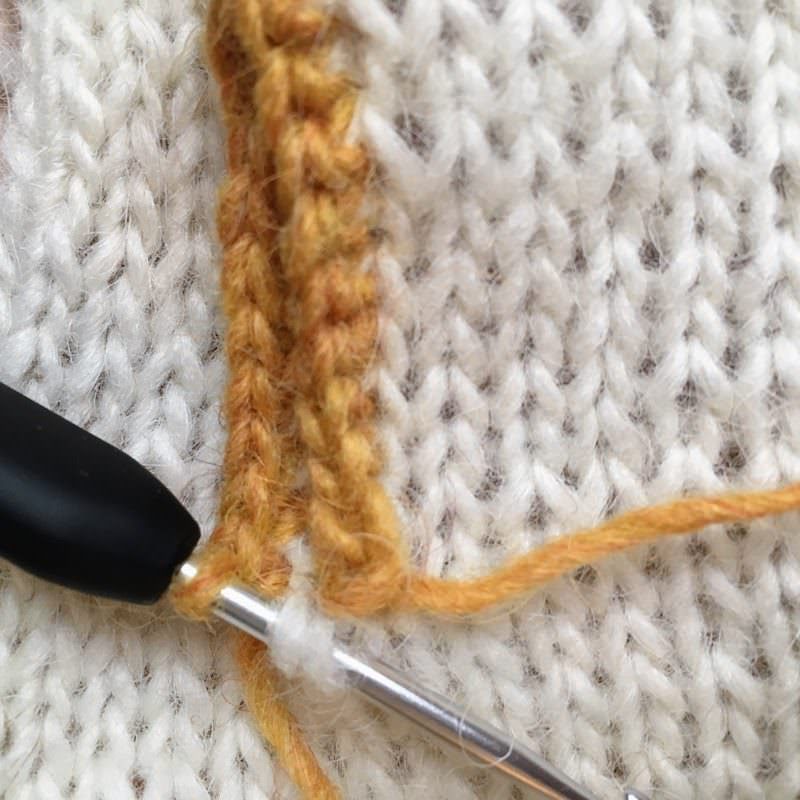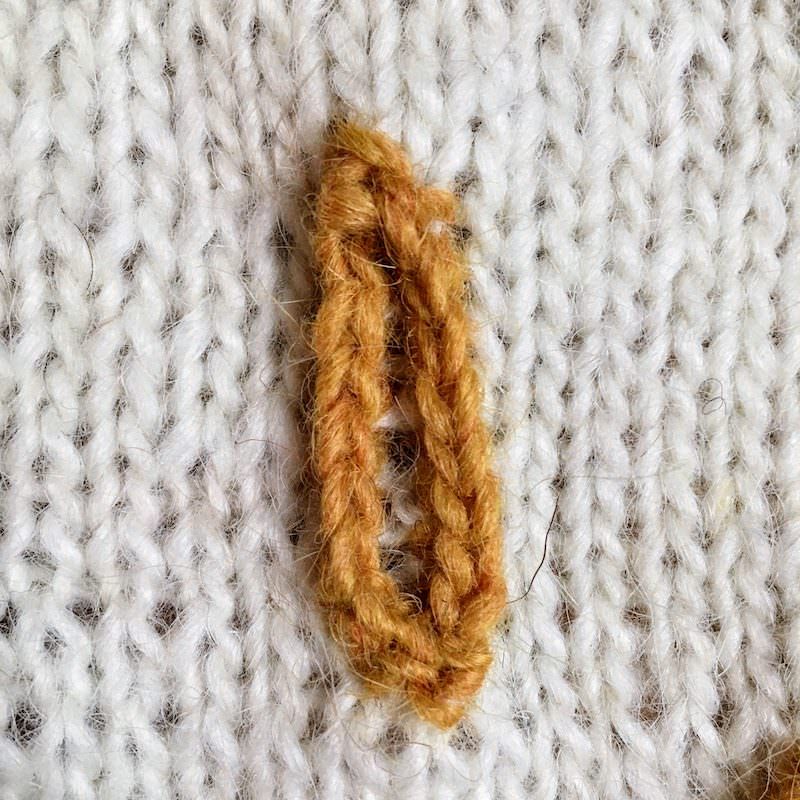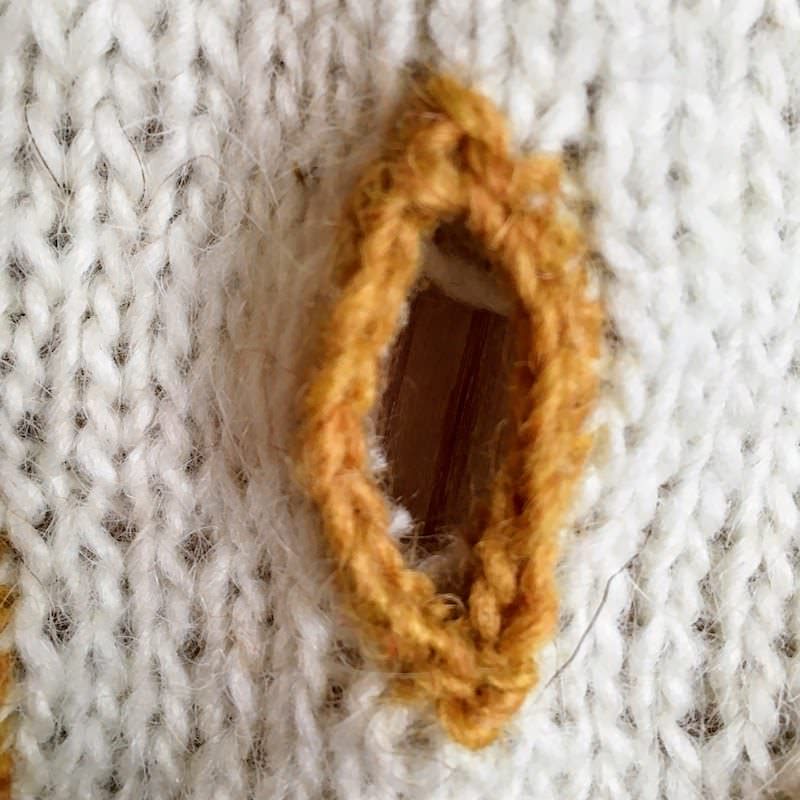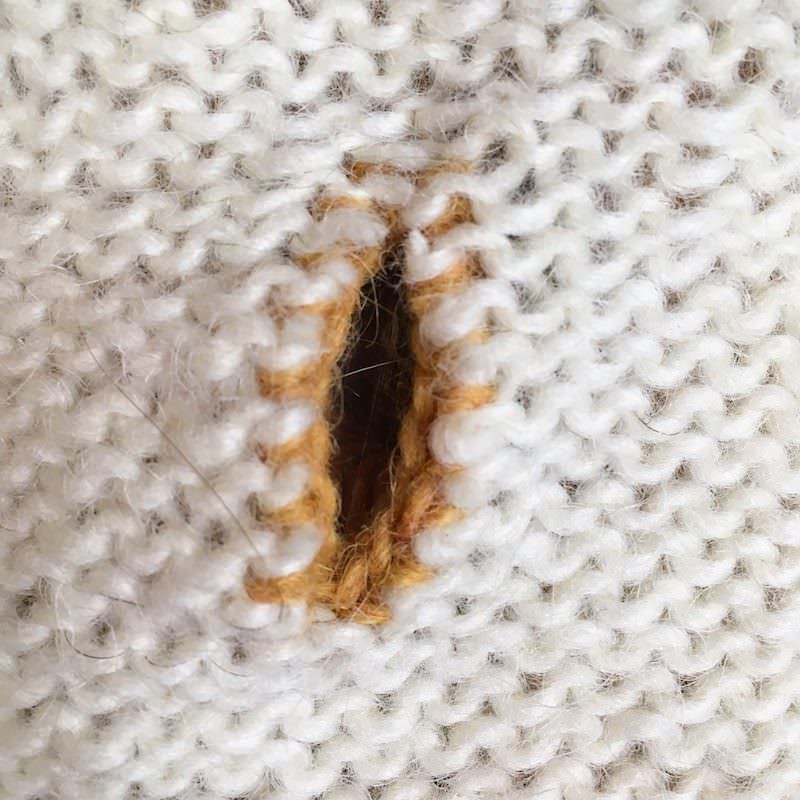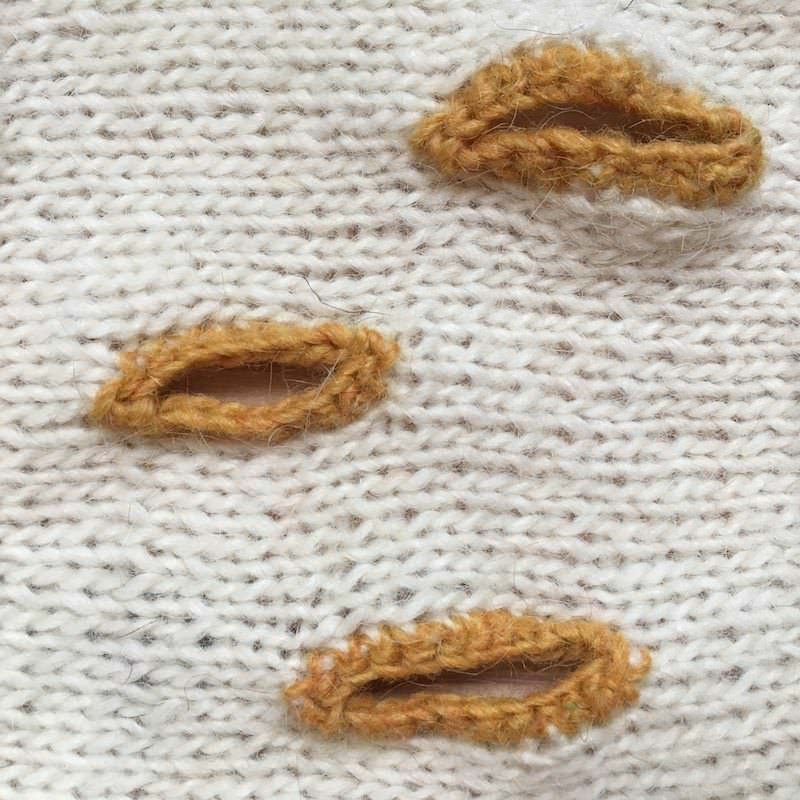Knitting tip & techniques
Crochet steek tutorial
A steek is when you cut into a knitting fabric. This tutorial is meant to show you how to make the pocket openings on my Útivist sweater. Try it on your swatch first!
Here is how I marked the stitch where the pocket starts.
Remove stitch marker and insert crochet hook under both legs of the marked stitch.
Make a US single crochet or UK double crochet (SC).
Make a SC in the stitch on top of it, still going under both legs.
Continue working you way up with SC in every stitch until you have the required number of SC (for example 10 on your swatch but 36 for the Útivist pocket). It’s very easy to follow the column of stitches by folding the fabric in two between your fingers.
Next, insert the crochet hook in the left leg of the stitch on top and the right leg of the stitch next to it on left side, and work a SC: it’s the turning point of the pocket opening.
Now work your way down with SC in the column of stitches on left side of the first column you just worked, inserting hook under both legs. There is no space between the 2 columns.
Work the same number of SC than for first column, and after the last one, close the bottom of the opening (turning point) by inserting the hook in the right leg of the stitch below and the left leg of the stitch on its right (that’s the stitch just below the first column of SC).
Darn in ends, closing the round of SC.
With scissors, cut the ladder (the strand between stitches) between the 2 columns of SC.
This is what it looks like on the wrong side. The stitches are secured by the crocheted edge.
You can make more trials on your swatch before you do it in on your sweater!
Here is a little video:
[fvplayer src=”https://icelandicknitter.com/wp-content/uploads/2017/11/IMG_6976-2.mp4″ width=”1920″ height=”1080″]GOOD TO KNOW ABOUT THE CROCHET STEEK
- this method will work best on sticky yarns
- if the steek involves colorwork, you will have to have planned it in advance and prepared it especially so that all the colors are secured. You can only secure two colors in the row, so if there are more than two, this method won’t work.
- the SC have to be worked in every single stitch: since row and stitch gauge are different, you will have to crochet really tight to avoid the edges budging. This is why in Útivist I use a smaller crochet for steeking the pockets than for crocheting around the edges at the front and around the hood.
- number 2 and 3 are the reasons why I don’t use crochet steek to cut open a lopi sweater and make a cardigan. Even with a smaller crochet, the chances that the edges will bulge is too great and in the yoke colorwork, unless you’ve prepared it (by knitting a checkboard with the colors), only one color will be secured. Not a good idea!
- the traditional Icelandic method to cut open a lopi sweater is the sewn steek. Once cut, the steek is hidden by SC around the edges going into 2 out of 3 stitches to avoid bulging like in Útivist (or Olga, Gilipeysa, Brynja Litla, …). Or stitches are picked up along the edges, again 2 out of 3, and a button band knitted like in Gamaldags (or Brynja, …). I made many tutorials about the sewn steek, here.


